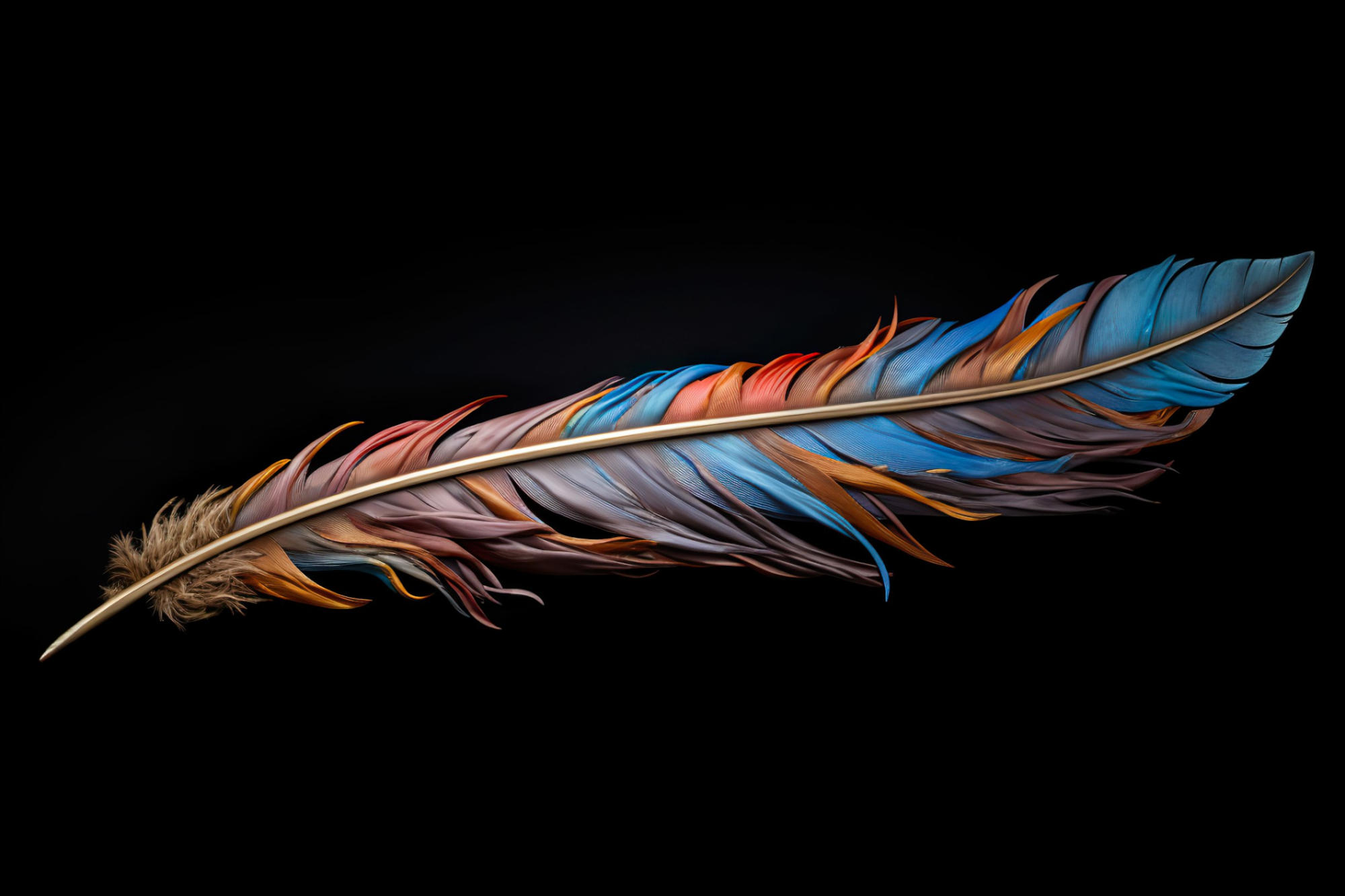

New research reveals that dinosaur feathers had a protein composition similar to modern birds, suggesting an early origin for bird feather chemistry, perhaps 125 million years ago. The study found that the alpha proteins found in fossil feathers were likely formed by heat during fossilization, and did not exist originally. (Artist’s concept of a dinosaur feather).
Powerful X-rays generated at the SLAC National Accelerator Laboratory have enabled researchers to gain new insights into the evolution of feathers.
How related are dinosaurs to today’s birds? A recent study delves into this question, looking at the evolution and change of proteins in dinosaur feathers over millions of years and under extreme heat.
Previous studies It suggests that dinosaur feathers contained proteins that made them less rigid than the feathers of modern birds. Now, researchers from University College Cork (UCC), the Stanford Synchrotron Radiation Light (SSRL) source at the Department of Energy’s SLAC National Accelerator Laboratory, and other institutions have discovered that dinosaur feathers originally had a protein composition very similar to that of modern birds. .
This finding means that the chemistry of current bird feathers may have originated much earlier than previously thought, perhaps 125 million years ago.
“It’s really exciting to discover new similarities between dinosaurs and birds,” said Tiffany Slater, a paleontologist at the University of California and lead author of the new study. “Using X-rays and infrared light, we found that the feathers are from dinosaurs Sinornithosaurus It contains a lot of beta proteins, just like the feathers of birds today. This discovery confirms our hypothesis that dinosaur birds had hard feathers, as is the case in modern birds.
The crux of the problem is the protein mix. Previous tests on dinosaur feathers found mostly alpha-keratin proteins, which lead to less rigid feathers, while modern bird feathers are rich in beta-keratin proteins, which strengthen the feathers for flight. However, the researchers wondered whether this difference reflects the true chemistry of the feathers during life or is a result of the fossilization process.
To find out, Slater and fellow paleontologist Maria McNamara, a paleontologist at the University of California, collaborated with SSRL scientists to analyze feathers dating back to 125 million years ago from dinosaurs. Sinornithosaurus And the early bird ConfuciusornisIn addition to a 50 million-year-old feather from the United States, they recently published their findings in the journal Nature ecology and evolution.
To uncover the proteins found in ancient feathers, the researchers placed the fossils in front of SSRL’s powerful X-rays, which revealed whether key components of beta proteins were present. This helped researchers determine whether the beta proteins in the sample were still in their “original” form or if they had changed over time – and how that change occurred chemically, SSRL scientist Sam Webb said.
The team also conducted separate experiments that simulated the temperatures the fossils would be exposed to over time, Webb said. These experiments showed that alpha proteins could form in the fossil as a result of the fossilization process, rather than being part of the feather during life.
The analysis showed that although some fossil feathers contain a lot of alpha proteins, they were probably not there originally, but formed over time. They were formed due to the extreme high heat to which fossils are exposed.
“Our experiments help explain that this strange chemical discrepancy is the result of protein degradation during the fossilization process,” Slater said. “Although some dinosaur feathers retain traces of the original beta proteins, other fossil feathers contain alpha proteins that formed during fossilization.”
“The idea that native protein structures may change over time is an aspect that is often overlooked when looking at biomarkers from ancient times,” Webb said. “Comparing our X-ray spectroscopy results with additional laboratory measurements of experimentally heated feather samples helped calibrate our findings.”
“Clearly traces of ancient biomolecules can survive for millions of years, but you can’t literally read the fossil record because even well-preserved fossil tissue has been cooked and crushed during fossilization,” said lead study author Maria McNamara.
“We are developing new tools to understand what happens during fossilization and to uncover the chemical secrets of fossils,” McNamara said. “This will give us exciting new insights into evolution.”
Reference: “Maintaining corneal beta proteins in Mesozoic “Feathers” by Tiffany S. Slater, and Nicholas B. Edwards, and Samuel M. Webb, Fuqing Zhang, and Maria E. McNamara, September 21, 2023, Nature ecology and evolution.
doi: 10.1038/s41559-023-02177-8

“Web maven. Infuriatingly humble beer geek. Bacon fanatic. Typical creator. Music expert.”





More Stories
Scientists confirm that monkeys do not have time to write Shakespeare: ScienceAlert
SpaceX launches 23 Starlink satellites from Florida (video and photos)
A new 3D map reveals strange, glowing filaments surrounding the supernova